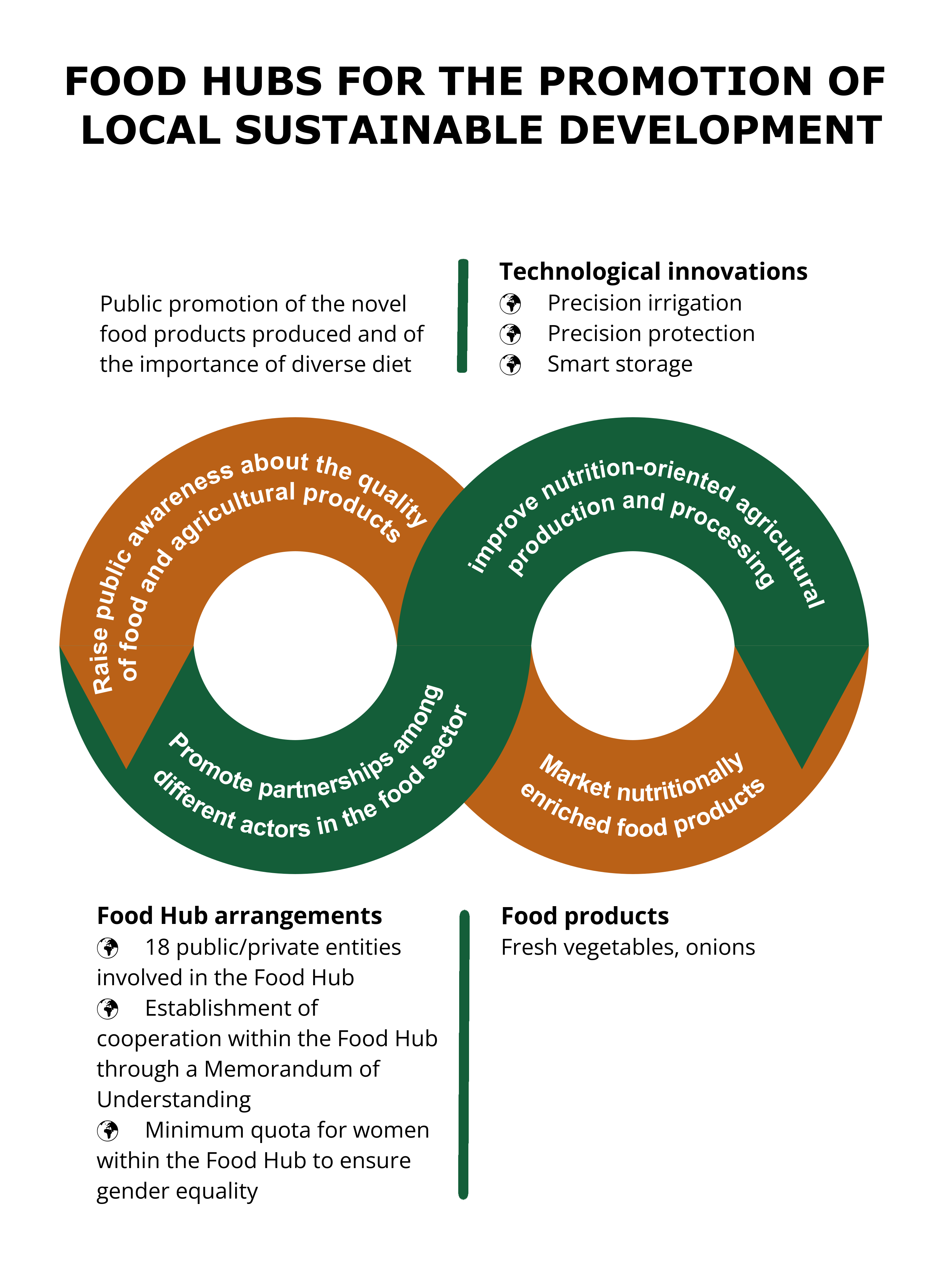The Prefecture of Meknès is located in northeast Morocco and was registered in 2020 with a population of 554,000 people.
The Moroccan diet comprises more of meat, cereals and less of fruits and vegetables.
Though both undernutrition and overnutrition exist, the rates of undernutrition are reducing whereas those of overweight and obesity are increasing across most stages of the lifecycle.
At the younger age of childhood, overnutrition affects more boys than girls and by the age of adolescence henceforth, the prevalence of overnutrition is higher among the women. In adults, obesity is more of an urban and female phenomenon.
Anaemia, which is a relatively common problem, affects 37.20% of pregnant women, 33% of women of childbearing age and 18% of men. In contrast to pregnant women and women of childbearing age, whose anaemia prevalence in 2000 declined from its 1993 level, it almost doubled in men, from 9.9% to 18%.
The crops with the most important agricultural production in Morocco are wheat (almost 48% of farmers produce it), olive (47% of farmers), onion (35%), and potato (almost 19%).
Highlights about the research with farmers
Technological innovations in this Food Hub
Precision irrigation systems. The installation of irrigation/ fertigation systems with smart sensors can efficiently prevent such a waste of water. The objective is to set up a digital solution allowing small farmers to schedule irrigation / Fertigation based on the monitoring of the continuous Soil, Plant climate using sensors and a smartphone app. All the information will be gathered through data collected by sensors installed in the field, processed, and distributed by a Big Data service.
In parallel, field trials should be done in order to validate the scientific algorithm incorporated within the app. These trials have the objective also to determine the scheduling irrigation parameters for some specific crops that are dominated in the region: potatoes, onion, and carrots.
Precision protection systems. The main objective of this axis will be to develop an early warning system for the management of late blight (downy mildew), caused by Phytophthora infestans on potato crops, based on the multispectral aerial images taken by drones equipped with multispectral camera sensors. During this study, researchers will focus on the use of multispectral wavebands (red-edge and near-infrared) and spectral vegetation indices (e.g., green/red ratio) as relevant feature predictors of general stress in plants. These vegetation indices will be correlated with disease severity to identify which is the best vegetation index to use for early detection of downy mildew on potato crops.
Smart storage systems. In order to further improve the conservation system already used in an area of Meknes, an intelligent system of humidity and temperature control through the use of connected sensors will be installed inside the silos. Additionally, a mobile application will be developed to monitor humidity and temperature parameters and also make remote decisions for the opening or closing of plastic flaps or the activation of fans.
Highlights about the research with farmers
FoodLAND surveyed a total amount of 500 farmers in this region with the aim of improving the background knowledge of African smallholder farmers’ decision-making and individual and contextual conditions. 71 out of these 500 farmers surveyed were women; all the rest were men. 77% of farmers are not members of any local farmers’ associations.
According to the information gathered from the surveys, 71.4% of farmers’ income is lower than the average income in the region, the income of 25% of farmers is about the average or somewhat higher, and only 3.6% of farmers stated an income higher than average. Nevertheless, 70,8% of them can meet their household’s food needs, 22.4% experience some difficulties, and 6.8% face serious food shortages.
Besides, they have reported major worries regarding the near future about the cost price increase of fertilizer or seed (3.82 on a scale from 1 to 5), drought (3.35) and income reduction and health diseases (3.05 and 3 respectively).
With regard to their interest and propensity to introduce new technologies and/or productions, 77% of farmers are extremely or moderately interested in adopting a technological innovation (4.24 on a scale from 1 to 5).
Highlights about the research with consumers
With the aim of enlarging background knowledge of African consumers’ food preferences and behaviours and of their socioeconomic drivers and measuring the current level of dietary diversity, FoodLAND has assessed food consumption at both individual and household levels that provide a good measure of diet quality and diversity. FoodLAND has conducted surveys both in households and out of stores in Meknès, which is paired with this Food Hub. 500 people participated in the survey. Below you can find some highlights extracted from these surveys, regarding consumers’ preferences, habits, incentives, and barriers when it comes to choosing food products for their households.
Parallel to the survey instruments, a series of incentivised economic behavioural experiments were developed to gain insights into consumers’ conscious and non-conscious decision-making processes. During the experiments, participants were asked to make decisions on the use of assigned tokens, which were going to influence both their final earnings and the earnings of one or some other participants.
A series of biometric tests were also conducted to gain insights into consumers’ conscious and non-conscious decision-making processes. These tests were conducted involving a sub-sample (200 participants) of the consumers who conducted the experimental and survey research activities. They were complemented with an experimental auction, to understand consumers’ preferences for different attributes of olive oil to increase its quality available in the market and promote the consumption of higher quality products.
Urban consumers consider on average their household diet as quite healthy (4.1 on a scale of 5). When asked about their propensity to include in their diets a new food product with augmented nutrient content (e.g., naturally improved bean with high levels of proteins and minerals) that could complement their current household diet, consumers report a high level of interest (4 on a scale to 5). When looking at the reasons behind the inclusion of new nutrient-dense food, Moroccan consumers rate the most the possibility of enhancing the healthiness of their household diet, their trust in doctor’s recommendations, trust in farmers or sellers, and affordability. The most rated obstacles are price, the feeling of lower food safety and potentially unfamiliar taste.
As for the reasons behind usual food purchasing behaviours, respondents in Morocco rate the most on average product characteristics (taste, aroma, colour, shape), nutrition content, food affordability (price), and their willingness to diversify or balance their diet. The food categories mostly lacking in the consumer’s household diet are on average oils, vegetables and cereal products.
Consumers were also asked about their interest in buying new local food products. They showed a moderate disposition to buy these local products (around 3.8 on a scale of 5). Among the reasons that make them choose the new local products, the three consumers rated the most were that it would be environmentally friendly, it could help local farmers and they could afford it.










